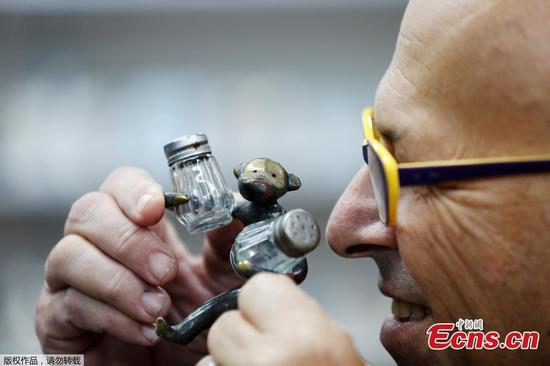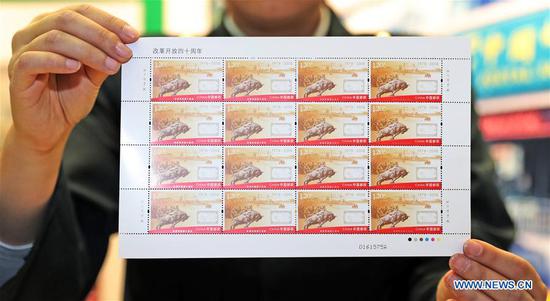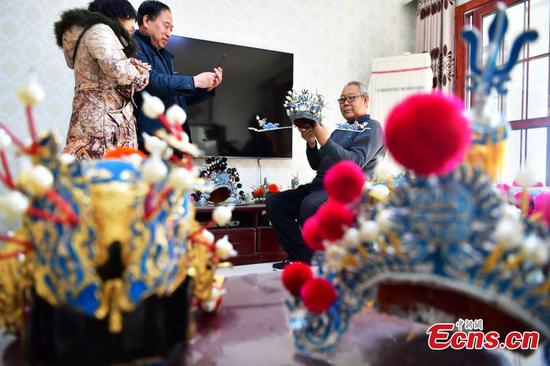As of November 25, 2018, the Chinese box office stood at 55.914 billion yuan (8.14 billion U.S. dollars), registering an annual growth of 10 percent.
Among the 73 films that raked in more than 100 million yuan (14.5 million U.S. dollars) at the box office, 39 were domestic productions.
While it remains to be seen whether the goal of breaking the 60-billion-yuan (8.7 billion U.S. dollars) mark will be achieved this year, the Chinese film market is no doubt a success story.
In the 40 years of reform and opening-up, dramatic changes have continuously altered the course of China's film industry development.
Milestones along the way
In 1979, when China had just entered a new era with reform and opening-up, a number of dubbed films were brought back to the theaters. It was a visual feast for Chinese people who were virtually deprived of films in the decade that preceded the policy.
Cinema admissions hit 29 billion, meaning on average a person visited the movie theater 28 times per year –a record that stands unchallenged to this day.
Meanwhile, a number of Chinese directors, with their creativity now stimulated and horizon widened, embraced the new era with a variety of new ideas, styles and artistic expressions.
Adopting Western theories and combining them with Chinese aesthetics and philosophical thoughts, several generations of Chinese directors carved their names in the history of Chinese film. Some of them have gone on to enjoy international fame.
In 1988, Zhang Yimou's "Red Sorghum" received the Golden Bear award at the 38th Berlin Film Festival. It was the first time a Chinese film took home the crown of one of the most renowned international film festivals.
Another title from Zhang, "The Story of Qiu Ju," also snatched the Golden Lion award at the Venice Film Festival in 1992, while its leading actress Gong Li pocketed China's first Best Actress award at the event.
Chen Kaige, also a representative of the "fifth generation" of Chinese filmmakers, won the Palme d'Or award at the 1993 Cannes Film Festival with "Farewell My Concubine."
Within 20 years after the reform and opening-up policy, Chinese filmmakers bagged Europe's three top awards.
In 1993, the Chinese film industry welcomed its first turning point by exploring reforms of the market system and mechanism. A year later, when the first Hollywood film "The Fugitive" debuted in China, long queues were seen in front of theaters in Beijing as moviegoers raced to watch the imported title.

CGTN Photo
During the next decades, while breathing new life into the Chinese film industry, foreign films also brought about a great impact to domestic productions. By the late 1990s, domestic films accounted for only less than 30 percent of the box office.
The second turning point for the Chinese film industry emerged in 2002, when the country deepened reforms and introduced the "cinema line system."
Every aspect of the film industry, including the production, distribution and projection was open to the market. Investment became diversified, and private film companies began to play an increasingly important role in film production.
In 2004, the box office of China's domestic films surpassed that of imported titles for the first time. In 2010, the Chinese film box office exceeded 10 billion yuan (1.45 billion U.S. dollars) and two years later, China surpassed Japan to become the second largest film market in the world.
Gearing up for innovation
From 2003 to 2015, the Chinese box office maintained an average annual growth of over 30 percent, with last year's box office reaching 55.9 billion yuan (8.1 billion U.S. dollars). At the same time, by 2017, China had over 50,000 theaters screens, 27 times more than the 1,800 screens in 2003.

CGTN Photo
In 2004, China produced about 100 films every year, but now the domestic film production has increased to around 700 yearly.
At the same time, China has been positioning itself on the global film map.
Last year, overseas sales revenue of Chinese films stood at 4.25 billion yuan (629 million U.S. dollars), four times that of 2012. The country has so far signed co-production agreements with at least 20 countries.
But amid the explosive growth, Chinese filmmakers have also been searching to better the quality of domestic productions.
"We've already got beautiful numbers since the reform in 2002, and now what we lack are high-quality productions to match that number," Rao Shuguang, secretary general of the China Film Association, was quoted by media as saying.
Rao also warned about the structural crisis in the expansion of the film industry. "The growth of the viewership could not match the growth of the cinema screens, and the attendance rate for some films is less than 15 percent. That is an alert for us."
It is still the golden era for the Chinese films, and now it is time to steer from high-speed to high-quality development, said Rao.


















































